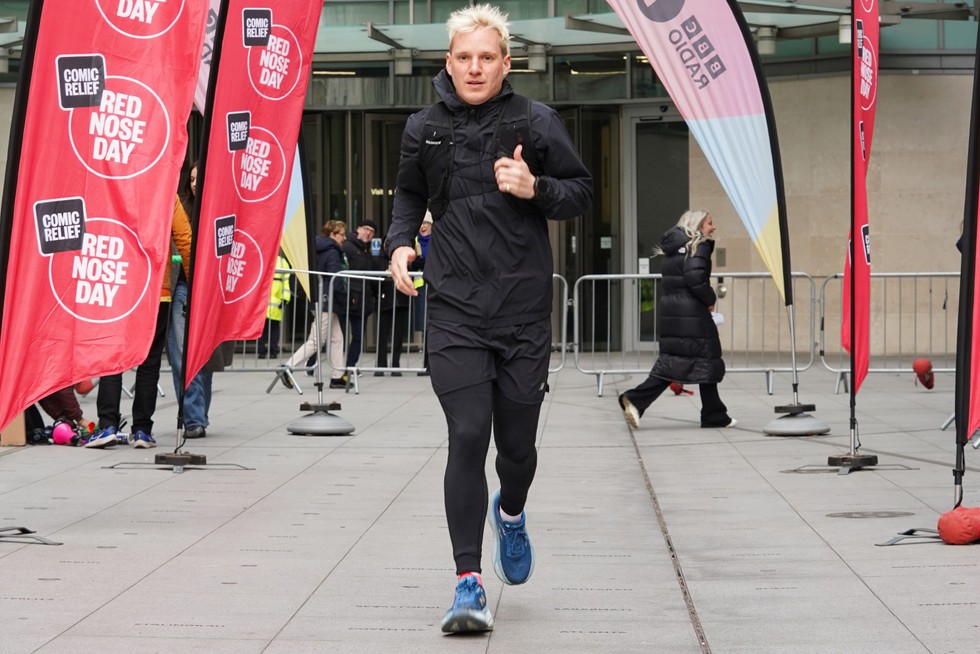The Doctor’s Perspective: Examining the Health Risks of Jamie Laing’s Five Consecutive Ultramarathons
Jamie Laing’s remarkable completion of five ultramarathons in five consecutive days, covering over 150 miles from London to Salford, represents an extraordinary physical feat that has raised over £2 million for Comic Relief. As a healthcare professional working as a Chiropractor in New Malden, however, I find this challenge presents an important opportunity to discuss the potential health implications of such extreme endurance events, particularly for someone who, by his own admission, had never run more than 5K prior to 2025.
The immediate physical toll on Jamie’s body was evident and medically significant. Most visibly, he developed severely swollen feet with bruised toenails that he himself described as “hobbit feet.” This condition, medically known as subungual hematoma or “runner’s toe,” occurs when repetitive impact causes microtrauma and bleeding under the toenail. His concerns about his toenail “about to fall off” represent a common ultramarathon injury that can lead to infection if not properly managed.
Jamie’s foot swelling exemplifies venous insufficiency, which commonly occurs in ultramarathon runners due to “repetitious impact causing microtraumas to small capillaries”. This isn’t merely cosmetic—such swelling indicates significant circulatory stress and fluid imbalance that can compromise recovery and mobility.
During the challenge, Jamie repeatedly described himself as “mentally gone, physically broken,” with “nothing left.” These statements align with the physiological exhaustion documented in ultramarathoners and indicate he was experiencing significant physical distress.
While Jamie’s visible foot injuries garnered attention, less apparent but potentially more serious were the likely cardiovascular impacts. Research shows that ultramarathons can cause significant changes to heart function, including elevated cardiac enzymes and temporary heart chamber enlargement. Of particular concern is right ventricular dysfunction, which has been documented in ultramarathon runners.
Cardiologists like Dr. John Hayes note that while a single ultramarathon may cause temporary changes that resolve, consecutive endurance events with inadequate recovery pose greater risks: “Doing back-to-back events over many years may lead to patchy scarring, enlargement of the upper chambers of the heart, calcium buildup in the arteries and stiffening of the heart muscle”. For someone like Jamie completing five consecutive ultramarathons with minimal training, these risks were significantly elevated.
SOURCE: https://shine365.marshfieldclinic.org/heart-care/endurance-athletes/
Beyond cardiovascular concerns, ultramarathons place enormous stress on the kidneys. Acute kidney injury is a common race-day health risk for ultramarathoners, with reduced blood flow to kidneys during extreme exertion. Five consecutive days of this stress compounds the risk, with research suggesting repeated acute kidney injuries could potentially contribute to chronic kidney disease through renal scarring and maladaptive repair.

Jamie’s immune function was also likely compromised during and after his challenge. Research shows high-volume running leads to transient immunosuppression, making runners more susceptible to infections. This explains why many ultramarathoners experience upper respiratory infections following events, a risk that multiplies with consecutive races.
As healthcare professionals, we must balance acknowledging remarkable achievements with providing informed perspectives on health risks. Jamie’s completion of this challenge demonstrates extraordinary determination, and his fundraising success is commendable. However, the potential short and long-term health impacts of such extreme consecutive endurance events cannot be overlooked.
For the average person inspired by Jamie’s achievement, a more measured approach to ultramarathon running would include proper training progression, adequate recovery between events, and appropriate medical screening. As Nick Tiller, an ultramarathoner and researcher at Harbor-UCLA Medical Center notes, “Knowing the literature as I do, I’m much more conservative now with my running… these days I’m more selective, particularly as I get older”.
While Jamie’s ultramarathon challenge has raised important funds and awareness, it also serves as a valuable opportunity to discuss the significant physiological demands and potential health consequences of extreme endurance events, particularly when undertaken without adequate preparation or recovery time.
Jamie Laing’s five consecutive ultramarathons represent both an impressive achievement and a concerning case study in physiological extremes. While celebrating his mental fortitude and charitable contribution, healthcare professionals should view this challenge as an opportunity to educate about the substantial risks of such compressed extreme endurance events. The most sustainable approach to ultramarathon running involves progressive training, appropriate recovery, and a respect for the body’s physiological limits—particularly for those new to the sport.
Jamie’s team refused to comment for an interview (he’s probably too busy recovering!) but we would love to welcome him to New Malden’s Chiropractic Clinic at any time for a free once-over of those runners toe nails 😉
















